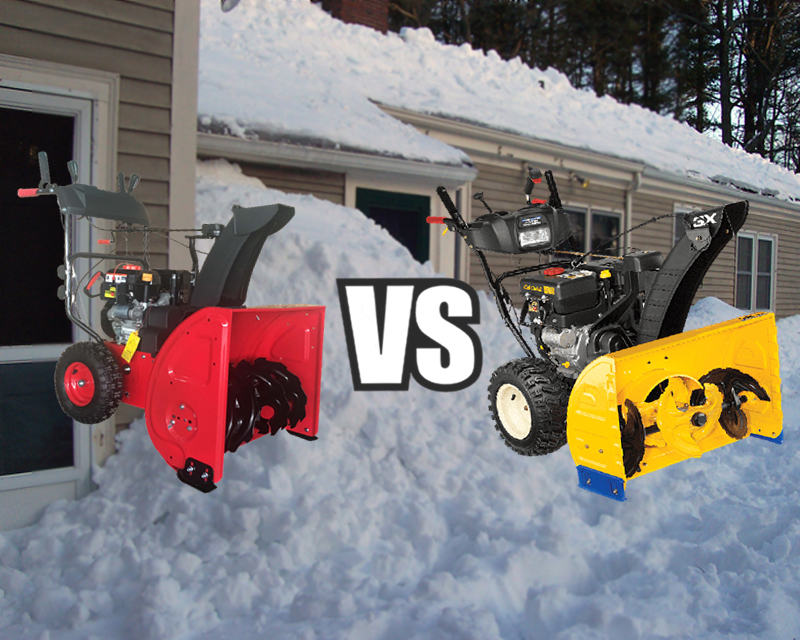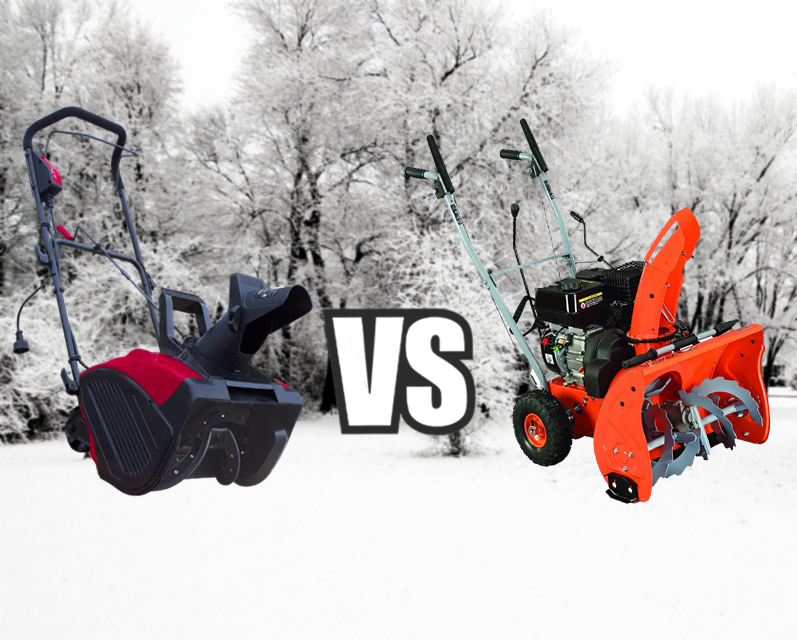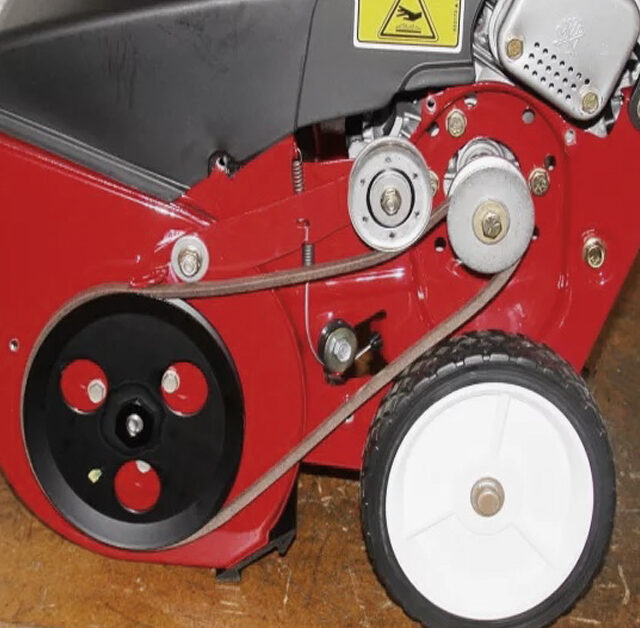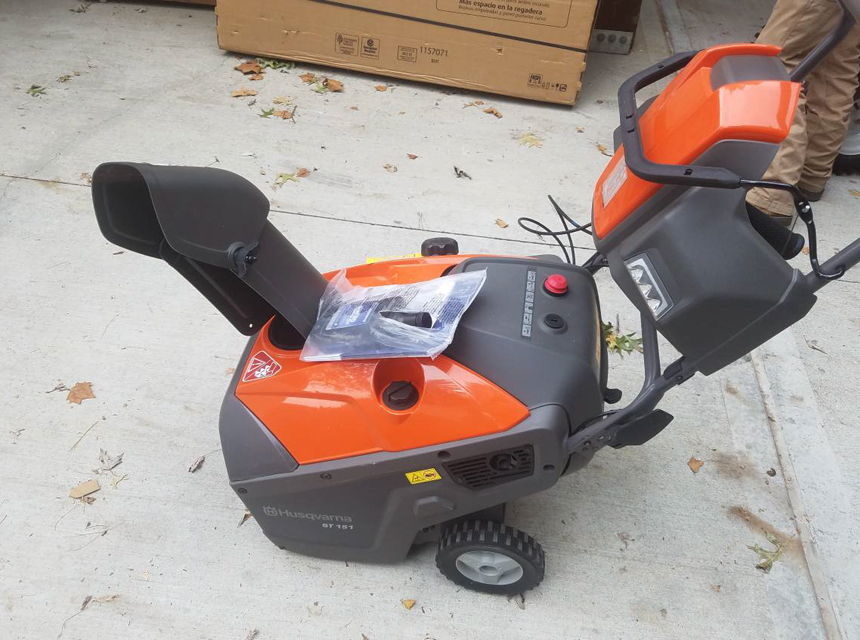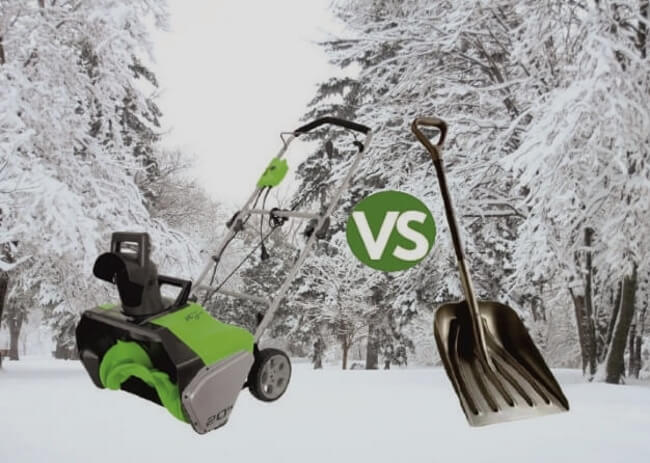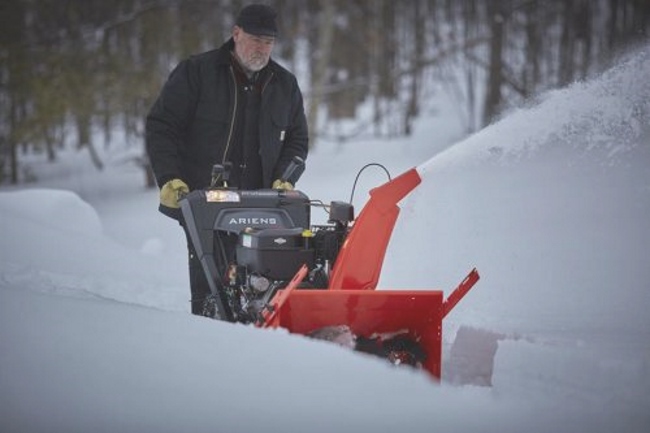
Have you used a snowblower in wet snow before? Just how frustrated did you feel? Believe it or not, you are not the only unfortunate soul with the worst experience using a snowblower. Not knowing how to use a snowblower in wet snow can leave you worked up with no viable results. However, with the correct machine and techniques, it is much easier and faster than shoveling snow.
Most people are unaware of the fact that a snowblower cannot be used in all snow-related circumstances. Wet and heavy snow can clog the snowblower leading to its breakdown if not well-attended to. The ideal snow for using a snow blower is light and fluffy. Otherwise you need to invest in a high-end snowblower that uses more power. Therefore, to blow wet snow from your driveway, you need to buy the right machine then employ a few tricks. Read on to find out more about these tricks.
You may have it all in terms of techniques, but without the right machine, it is null and void. You might even find yourself using a shovel. Snowblowers are not meant to be used on wet and heavy snow as they are likely to clog up and get damaged. Also, they aren’t meant to be used on excessive snow build-ups, but there are a couple of models that can handle both situations with great techniques. The 3 main types of snowblowers are;
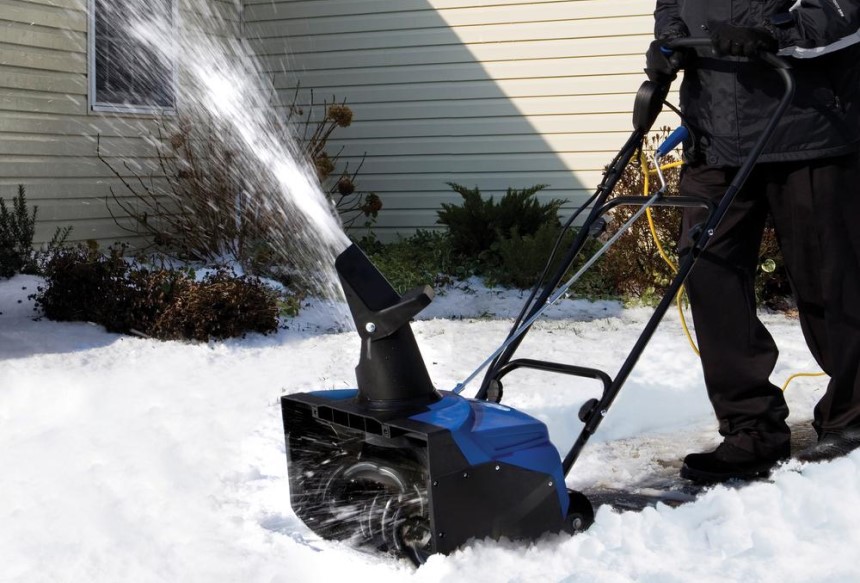
Plus, the auger of a single-stage snowblower touches the ground, which is not so good if you have gravel on your yard or driveway. You can still get a single-stage snow blower for wet snow if the area you intend to be clearing is relatively small in size. The area should also be made of either asphalt or concrete, and the snow shouldn’t be more than 9 inches.
The Briggs & Stratton 1697099 Snow Thrower is the most popular single-stage snowblower on the market. Experts recommend it for its adjustable chute deflector that allows you to adjust the throwing height and its wide clearing path. It also has an impressive 12.5inch intake height that can handle deep snow.
Before you buy a single-stage snowblower, remember they are not self-propelled. This means you have to break a sweat to push it through dense and wet snow.
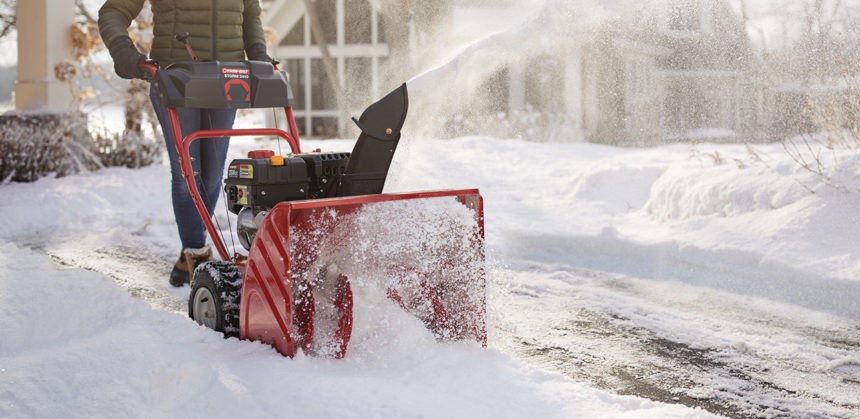
It is also much faster than a single-stage snowblower because its 2 augers process more snow, and its impeller throws snow faster and further than just an auger could.
If you are looking for a snowblower for residential snow clearing, a 2-stage blower is highly recommended. The YARDMAX YB6770 Two-Stage Snow Blower is the most acclaimed 2-stage blower out there. Its main selling point is its multi-speed, self-propeller drive that offers maximum speed and control. It also offers top-notch convenience with its heated handgrips and cup holder that make working in the harsh snow conditions a bit better.
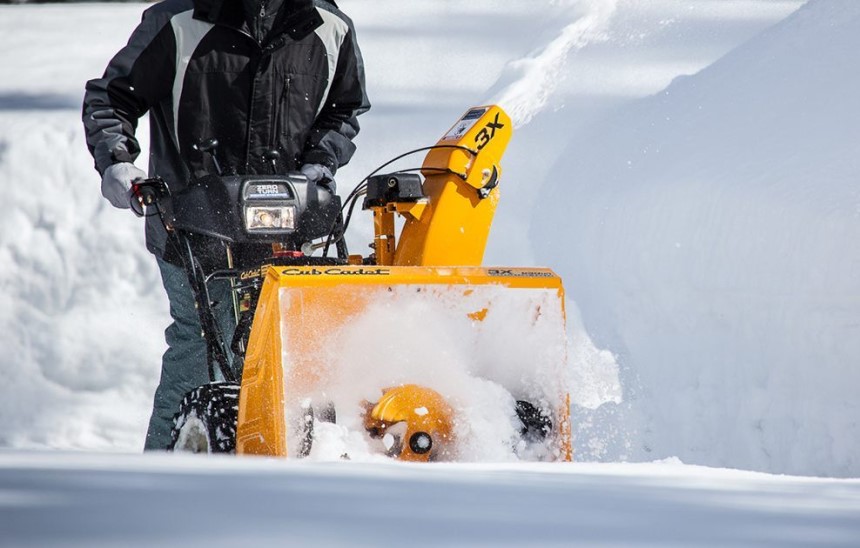
If you are looking to clear dense and wet snow in a large area, then you should invest in the best 3-stage snowblower like the Troy-Bilt Vortex 2490 277cc gas snow thrower. It would be more useful in areas that get up to 24 inches of wet snow. The snow thrower can clear a walkway or driveway up to 24 inches wide and 21 inches deep in a single pass. Plus, unlike other snowthrowers, you just need one hand to operate it, thanks to its touch ‘N’ turn power steering.
Different snowblowers have different capabilities depending on the size and the model. While no snowblower is designed to handle wet snow, there are some that could help you get the job done easily compared to others.
For instance, if you are looking to clear up a large area, then you want to invest in a large snowblower that doesn’t require much physical effort to operate, or else you will experience burnout.
However, bigger is not always better. If you want to clear a small area like a pavement, then a big snowblower will be one hell of a nuisance to operate. It will be challenging to maneuver it, and you will end up using much energy and time. For your small or medium-sized home lot, go for a small snowblower that will be much easier to maneuver.
Blowing wet snow is not a walk in the park if you lack experience, technique even if you have the right machine. Here are a few tips on how to use a snowblower in heavy wet snow. Before you delve into learning the tricks of the trade, read the manufacturer’s instructions in the user manual so that you can familiarize yourself with the machine’s functionality. You don’t want to be the know-it-all who has his wrist stuck somewhere on the machine.
Unlike dry snow, wet snow is super-sticky. Dry snow is powdery as its flakes don’t clump together. Wet snow would easily stick in your snowblower’s chute and clog it. This is the point where most people would stick their hand into the chute to unclog it. You need to be extra careful doing this as you may get your wrist stuck in there, or you might even risk a finger amputation. Creepy right? To avoid all this, you could use a tool instead, or even better, wait for the snow to melt. Just don’t use your hand to unclog your snowblower’s chute.
Imagine getting up at 4 am to remove snow from your driveway so you can beat Monday morning traffic then waiting for snow to melt. Luckily, there’s a way better solution for all of us who are impatient. Snow glides off a non-stick coating. You can therefore use any non-stick coating material, including Teflon-based spray, WD-40, Silicone spray lube, or ski wax to coat your chute or impeller when it is dry.
Pro-tip: Wax will take longer to apply, but it is totally worth it as it lasts longer.
It’s understandable that there is zero fun in clearing snow hence the urge to go quickly with your snowblower. Going too fast is the surest way of getting your snowblower clogged. In fact, going too fast is pretty much counterproductive as you will spend more time cleaning your chute. It also increases the risk of your machine getting damaged as you might wear it out.
Most manufacturers recommend that you move your snowblower in increments of one-third to a half of its own width. If you feel too impatient to use that pace, you can try to pause every five feet to allow you snowblower to discharge all the snow it has accumulated.
You have no option but to move at a snail-pace with the increment method if your area gets really heavy snowfalls.
Another reason why you should pace yourself is because it helps prevent overexertion, which can be dangerous in cold temperatures. Cold weather increases the risk of health emergencies, especially for people who have terminal illnesses like heart disease, high blood pressure, and diabetes. This is because blood vessels constrict in cold weather to help the body save some heat. When your blood vessels constrict, your blood pressure rises, and the platelets are much closer together and sticky such that if you have any underlying conditions like diabetes, the closed space increases their chance of clotting.
Clearing wet snow is not the simplest of tasks, but can you imagine re-doing it because you didn’t throw snow far enough? Throwing heavy snow is also a bit tricky, but there are myriad ways in which you can do it. The first simple way is to take in less snow at a time. You might be tempted to take in more snow in the attempt to hurry and get it done quickly, but your machine needs to concentrate its throwing power on lighter loads of snow.
Another thing you could do is run your machine slowly at full throttle. Most people confuse engine speed with ground speed. A snowblower can process snow aggressively when moving slowly. If you are using a self-propelled snowblower, it should have speed settings that allow you to adjust its speed. For wet snow, choose a lower setting so that your snowblower only takes less snow at a time.
You can also raise your snowblower’s chute diverter higher so that it can aim the dispersed snow higher. The higher the snow gets propelled, the further it travels before landing.
Another genius option is to take advantage of the wind. Blow snow in the same direction the wind is blowing so that it can get propelled further by the wind.
Your snowblower could also fail to throw snow far enough because of friction in its moving parts. Lubricating the moving parts can make a whole difference, allowing the machine to make a more powerful and further throw.
The final option is to modify your snowblower to never clog and throw snow twice as far as it normally does. You need mechanical skills and extra keenness to be able to hack this option as you can easily lose your fingers if something goes wrong. Before you begin doing anything,turn of the snowblower and remove its spark plug. Around the impeller, is an empty space meant to prevent it from scraping its housing. It is this space that allows snow build-up that causes clogging. You can use pieces of rubber to modify the impeller blades and make them rub against the housing harmlessly to make snow build-up impossible as well as enhance their throwing power.
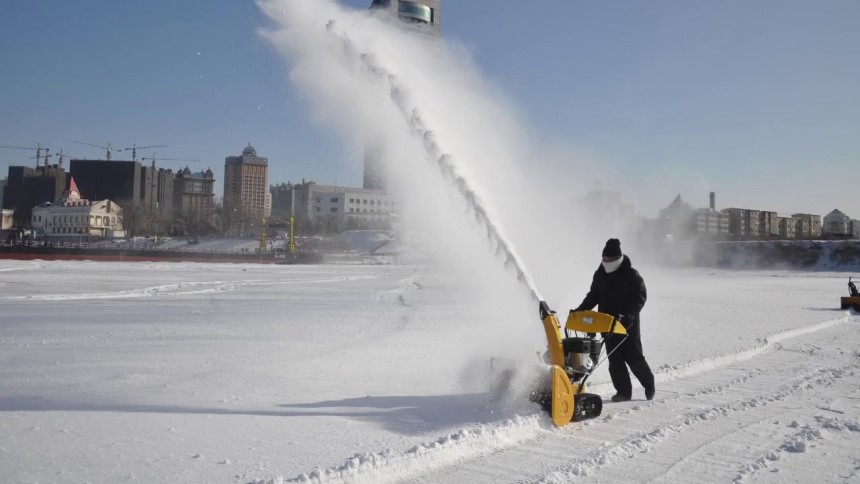 Clear the snow early in the morning
Clear the snow early in the morningThe only difference between wet and dry snow is a little moisture. Dry snow has just about 10% of water, while wet snow has about 20% of water. Therefore, wet snow is much heavier than dry fluffy snow.
Snow can melt pretty fast, especially after the sun comes out. This is why it is advisable to clear snow very early in the morning, right before dawn. At this time, the temperature is at its coldest, and the snowflakes are not clumped up together. Be cautious not to disturb your neighbors.
Clear the snow no more than 6 inches deep
Generally, snowblowers are not meant to handle excessive snow build-up above 6 inches. Unless it is a high-end model with a superpowerful engine. So, if you can’t wake up at the crack of dawn to clear snow from your driveway, then plan to tackle it when it has newly set. Don’t let the snow pile up before you can deal with it. Clear it before it reaches 6 inches high. You are likely to spend more time outside, but you and your snowblower are likely to have an easier time.,
Further, you don’t have to worry about things that could potentially damage your machine hidden under thick, piled-up snow. You will experience fewer jams often caused by stuff like frozen newspapers.
Tackling wet snow can be daunting, but with the right techniques and machine, you will always enjoy clear driveways and walkways anytime you experience heavy snowfall. We have provided great hacks and tips on how to use a snowblower in wet snow. The tips will not only help you clear wet snow efficiently but will also help protect your machine from wear and tear. You will barely experience a clogged chute or a machine breakdown.
Before you even delve into learning what to do, ensure you get the right machine, then read the manufacturer’s instructions to wrap your head around its functionality. To clear wet snow effectively and efficiently, do it before dawn or before it piles up. While at it, ensure you throw the snow as far as possible so that you don’t have to repeat the gruesome task.
